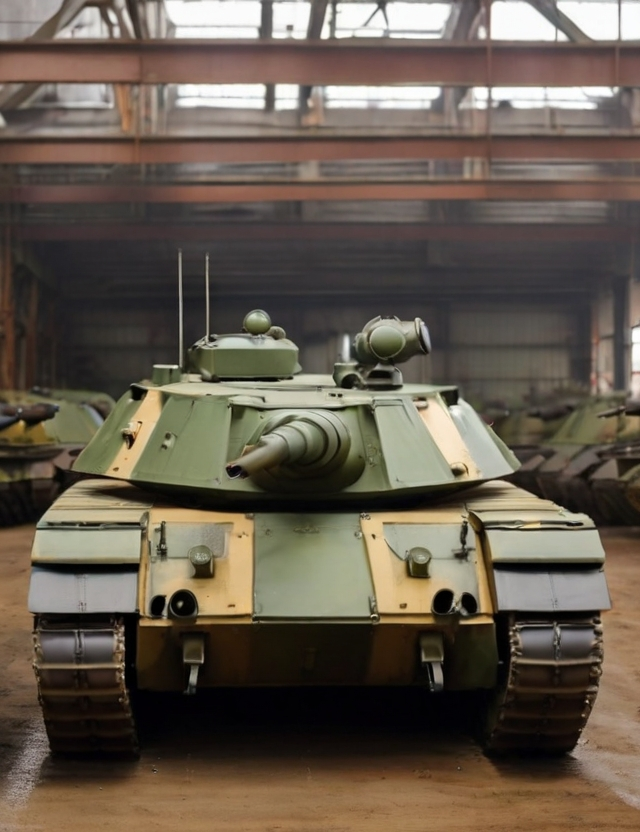Tank warfare has always been a cornerstone of military strategy, and recent events in Ukraine have underscored its enduring importance. Russia’s loss of 3,000 tanks in Ukraine, according to research center reports, has prompted a significant shift in its military tactics and priorities.
Introduction
In contemporary conflicts, tanks play a pivotal role in ground operations, offering firepower, mobility, and protection to infantry units. The recent conflict in Ukraine has highlighted the vulnerability of Russia’s tank fleet and the urgent need for modernization.
Overview of Russia’s Tank Losses in Ukraine
The conflict in Ukraine has resulted in substantial losses for Russia, with approximately 3,000 tanks reportedly destroyed or captured by Ukrainian forces. These losses have severely depleted Russia’s armored capabilities and exposed vulnerabilities in its military strategy.
Importance of Tank Warfare
Tank warfare has a rich historical legacy, dating back to World War I, where armored vehicles revolutionized battlefield tactics. In modern conflicts, tanks remain indispensable assets, providing armored protection and firepower to ground forces.
Historical Significance of Tank Development in Russia
Russia has a long history of tank development, dating back to the early 20th century. Soviet-era tank designs, such as the T-34 and the T-72, have left a lasting legacy on armored warfare and continue to influence modern tank design principles.
The Necessity of Tank Modernization
The loss of thousands of tanks in Ukraine underscores the urgent need for Russia to modernize its armored fleet. Outdated tank technology and equipment pose significant challenges to Russia’s military effectiveness and operational capabilities.
Research Findings on Tank Refitting in Russia
Research centers in Russia have been actively studying ways to refurbish and modernize old tanks to enhance their combat capabilities. These efforts involve upgrading armor, weapons systems, and communication technology to improve overall performance on the battlefield.
Challenges Faced in Refitting Old Tanks
Refitting old tanks presents several technical and logistical challenges, including retrofitting outdated equipment with modern technology and overcoming budgetary constraints. Additionally, maintaining a balance between modernization and cost-effectiveness is crucial for sustainable military development.
Advantages of Refitting Old Tanks
Despite the challenges, refitting old tanks offers significant advantages, including cost-effectiveness and the utilization of existing infrastructure and expertise. By refurbishing existing assets, Russia can enhance its military capabilities without the need for extensive procurement or production.
Modernization Techniques Employed in Tank Refitting
Modernization efforts focus on integrating advanced armor and weapon systems, as well as upgrading communication and targeting capabilities. These enhancements improve survivability, lethality, and situational awareness on the battlefield.
Impact on Russia’s Military Capabilities
The modernization of Russia’s tank fleet enhances its overall military capabilities, providing greater operational flexibility and combat effectiveness. Upgraded tanks are better equipped to meet the challenges of modern warfare, including asymmetric threats and hybrid warfare tactics.
International Response and Implications
The refitting of old tanks by Russia has raised concerns among neighboring countries and NATO allies, who view it as a potential escalation of the arms race in the region. The international community is closely monitoring Russia’s military modernization efforts and their implications for regional security.
Future Outlook for Russian Tank Warfare
Looking ahead, the evolution of Russian tank forces is likely to involve further advancements in technology and tactics. Future developments may include the integration of unmanned systems, artificial intelligence, and other emerging technologies to maintain a competitive edge on the battlefield.
Conclusion
In conclusion, the refitting of old tanks is a critical component of Russia’s efforts to modernize its military and enhance its capabilities in response to evolving security challenges. By investing in tank modernization, Russia seeks to maintain its strategic advantage and safeguard its national interests.
FAQs
- How many tanks has Russia lost in Ukraine? Russia has reportedly lost approximately 3,000 tanks in Ukraine, according to research center reports.
- What are the main challenges in refitting old tanks? The main challenges include retrofitting outdated equipment with modern technology, overcoming budgetary constraints, and balancing modernization with cost-effectiveness.
- What advantages does refitting old tanks offer? Refitting old tanks offers advantages such as cost-effectiveness and the utilization of existing infrastructure and expertise.
- How does tank modernization affect Russia’s military capabilities? Tank modernization enhances Russia’s military capabilities by providing greater operational flexibility, combat effectiveness, and survivability on the battlefield.
- **What is the international community’s response to Russia’s tank ref



